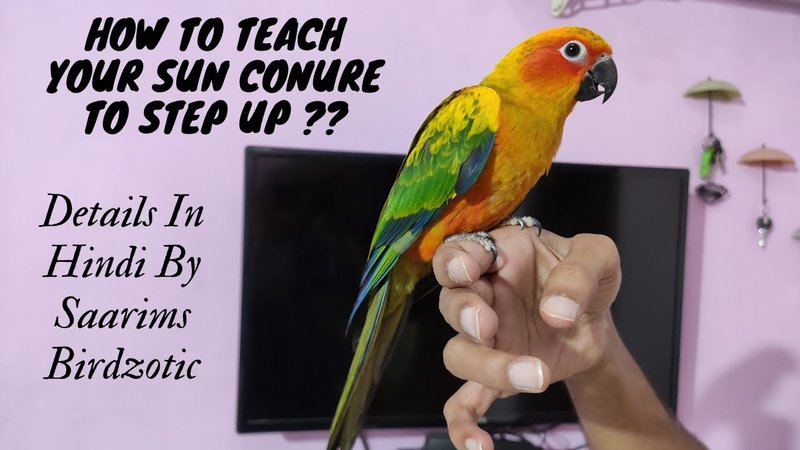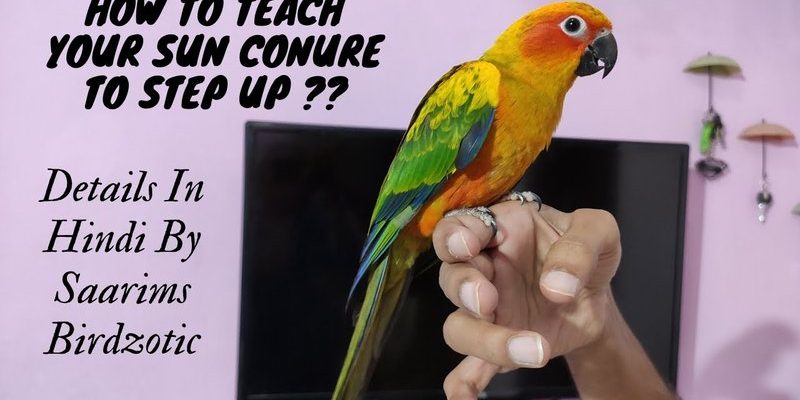
Getting started might feel a bit overwhelming, but here’s the thing: training a conure is all about patience, consistency, and a sprinkle of creativity. Just like teaching a young child, you need to make it fun and engaging. Whether you’re hoping to teach your conure simple commands or fancy tricks, I’m here to guide you through the process in a clear, friendly way.
Understanding Your Conure’s Behavior
Before diving into training, take a moment to observe your conure’s natural behavior. Conures are social, playful, and often a bit goofy. They thrive on interaction and can be quite vocal. Understanding your bird’s personality is key; some conures are more adventurous, while others may be shy or cautious.
You’ll want to build trust with your conure first. Spend quality time together and let your bird acclimate to you and its environment. You might notice it becoming more comfortable with your presence. This bond is crucial when starting any training; think of it as laying a solid foundation before building a house.
During this observation period, pay attention to what makes your conure tick. Does it love to chew on toys? Is it more inclined to mimic sounds? These preferences will help you choose the right rewards and training approaches later on.
Essential Tools for Training
To train your conure effectively, you’ll want to gather a few essential tools. Here’s a handy list to get you started:
- Positive Reinforcement: Treats like sunflower seeds, bits of fruit, or pellets your conure loves.
- Clicker: A small device that makes a clicking sound, useful for marking desired behaviors.
- Perches and Playstands: Stable places for training sessions, allowing your conure to feel secure.
- Time and Patience: Remember, every bird learns at its own pace, so be ready to adapt.
Having these tools on hand will make training smoother and more enjoyable. It’s like getting the right gear before going on an adventure—you wouldn’t want to hike without a proper pair of shoes, right?
Starting with Basic Commands
Once you’ve created a trusting environment and gathered your tools, it’s time to start with some basic commands. These commands are the foundation for more advanced tricks later!
Begin with simple actions like “step up” and “step down.” To teach “step up,” hold your finger out in front of your conure’s perch. When it hops onto your finger, use the clicker and reward it with a treat. Repeat this several times until your conure associates your finger with a positive experience.
Likewise, for “step down,” gently encourage your conure to step back onto its perch. This step may take some time, as your bird learns what you expect. Keep it light and fun, celebrating small victories along the way!
Building on Tricks: Intermediate Commands
Once your conure is nailing those basic commands, you can start to introduce intermediate tricks. Think of tricks like “turn around” or “wave.” They’re fun and impressive, and they can also keep your conure engaged and mentally stimulated.
For “turn around,” hold a treat in front of your bird’s beak. Move it in a circle, encouraging your conure to follow it. As it turns its body around, click and reward. Repeat this until it can do the trick without much prompting.
As for “wave,” hold a treat above its head and gently tap its foot. When it lifts its foot up, click and reward. It’s like teaching a little dance move! Just remember, patience is key.
Dealing with Common Training Challenges
Training conures can present its fair share of challenges. Perhaps your bird is a bit stubborn or loses interest quickly. Here’s where understanding behavior comes into play!
If your conure seems disinterested, you might need to change things up. Try a different type of treat or a new location for training. Some birds thrive in quieter spaces, while others enjoy an audience. You might be wondering why it’s important to adapt your approach—well, it keeps your conure engaged and excited!
Additionally, if your conure keeps biting or screaming during training, it’s a sign of frustration or boredom. Take a step back, give your bird a break, and come back to it later. Just like us, birds sometimes need time to recharge.
Making Learning Fun with Games
Training doesn’t always have to be serious! Incorporate games into your training sessions to keep things lively. For example, you can play a game of fetch using a small wooden ball or a favorite toy. Toss it a short distance and encourage your conure to pick it up and bring it back.
Another fun game is “hide and seek” with treats. Hide a treat under a small cup or in a container and let your conure figure out how to retrieve it. Birds are naturally curious, so this taps into their instincts and keeps them entertained.
Games can also be a great way to reinforce what your conure has learned. The more fun you have, the more enthusiastic your bird will become about training, creating a positive feedback loop.
Consistency is Key
As with any form of training, consistency is crucial. Set aside specific training times each day, even if it’s just for 5-10 minutes. Regular training helps reinforce the habits you’re trying to instill.
Use the same commands and cues each time, and make sure everyone in your household is on the same page. If you use different words or actions, it can confuse your conure. Think of it like learning a new language—consistency builds understanding!
Lastly, don’t forget to keep it positive. Celebrate small successes, be patient with setbacks, and enjoy the process. Training a conure can be a delightful way to bond while teaching your feathered friend new skills.
Wrapping It Up
Training your conure is a beautiful journey filled with laughter, learning, and plenty of fun. By understanding your bird’s behaviors, utilizing the right tools, and remaining consistent, you’ll set the stage for a rewarding experience. You’ll not only be teaching tricks but also deepening the bond you share with your little companion.
So grab those treats, get ready to build some trust, and enjoy every moment of this adventure. Remember, each bird learns at its own pace, but with love and patience, you’ll be amazed at what your conure can do!

